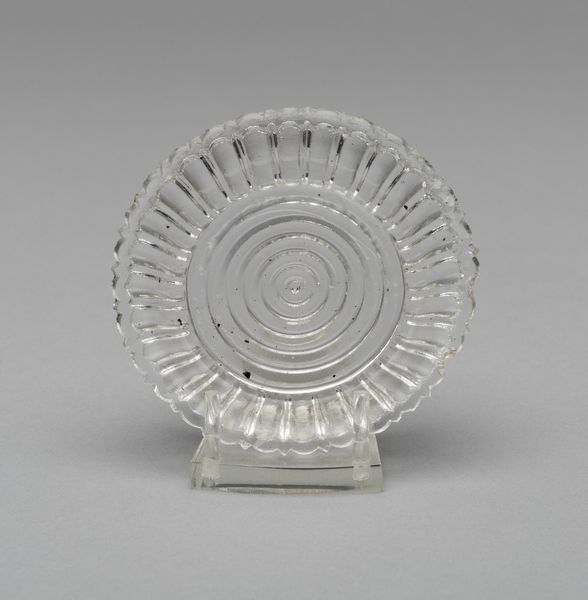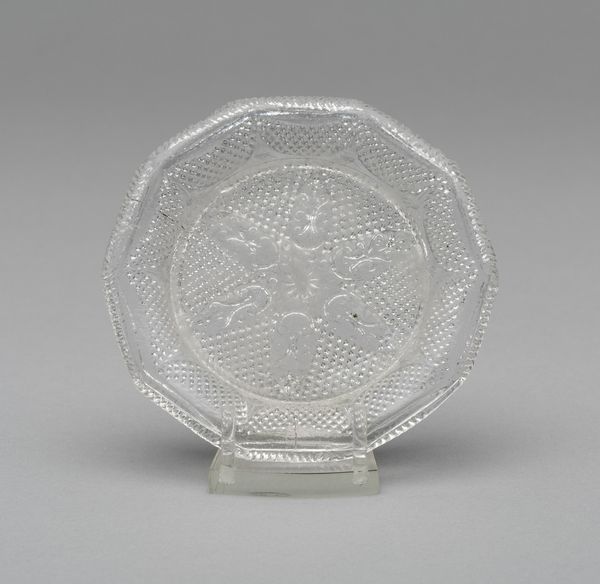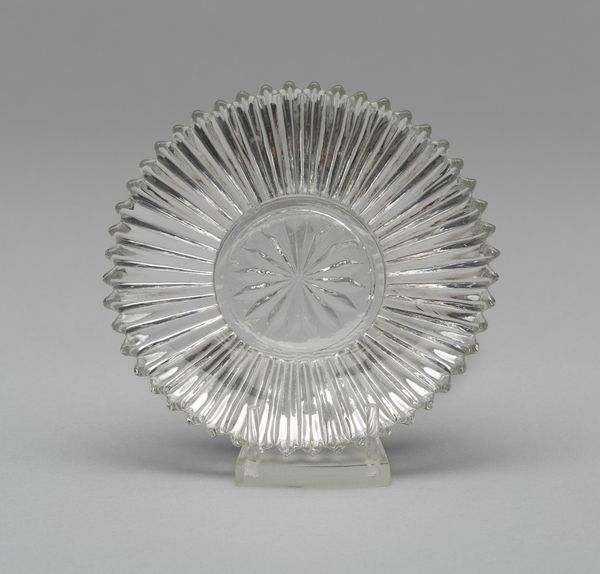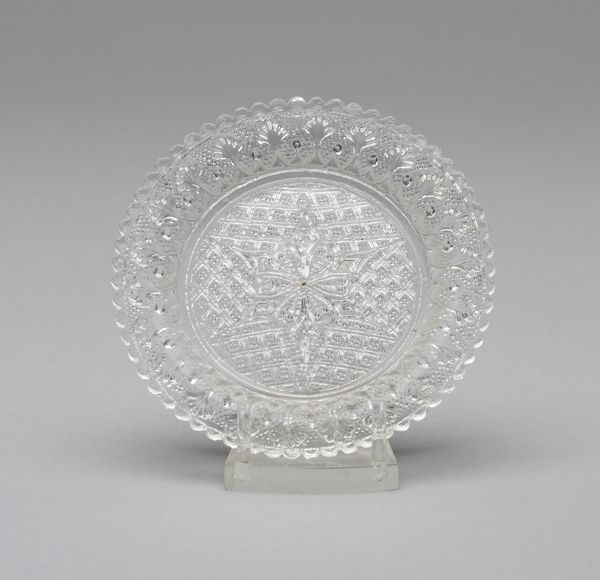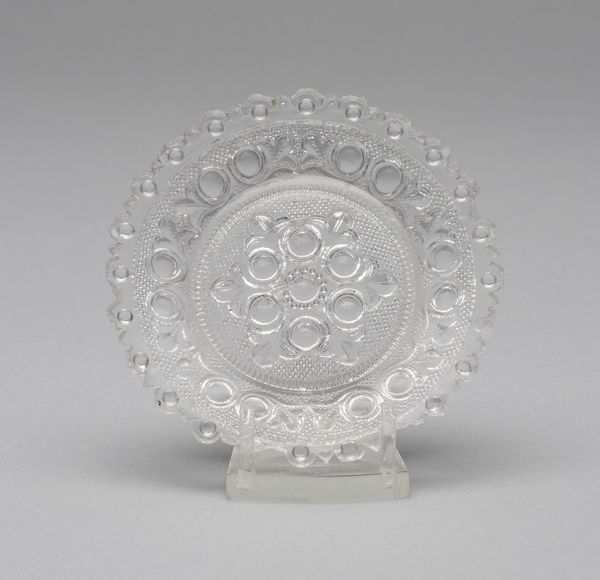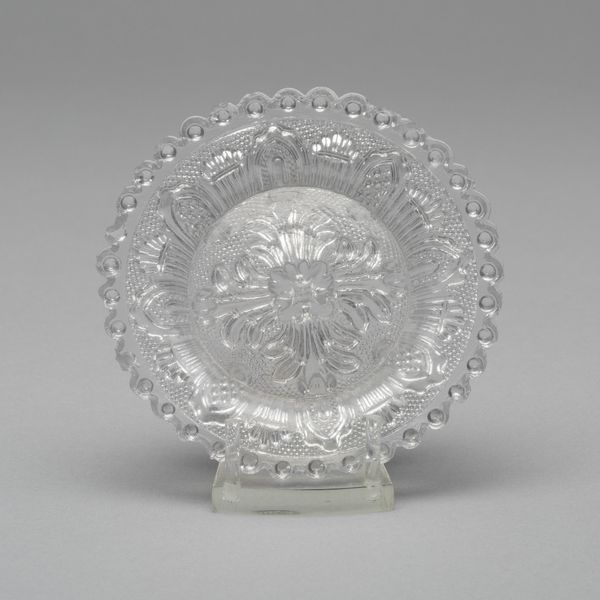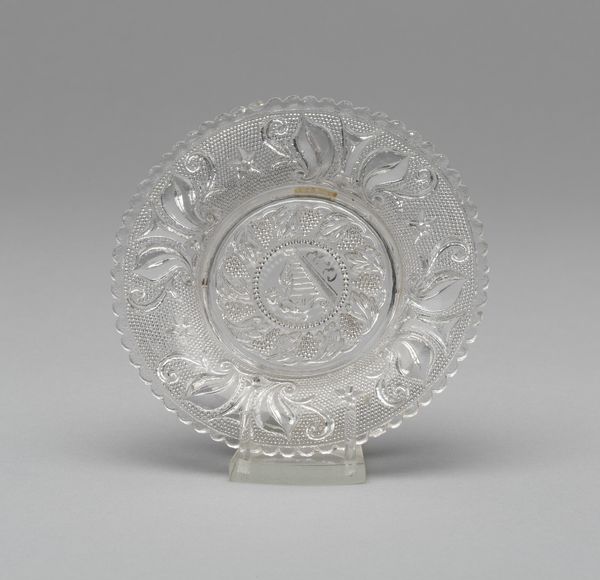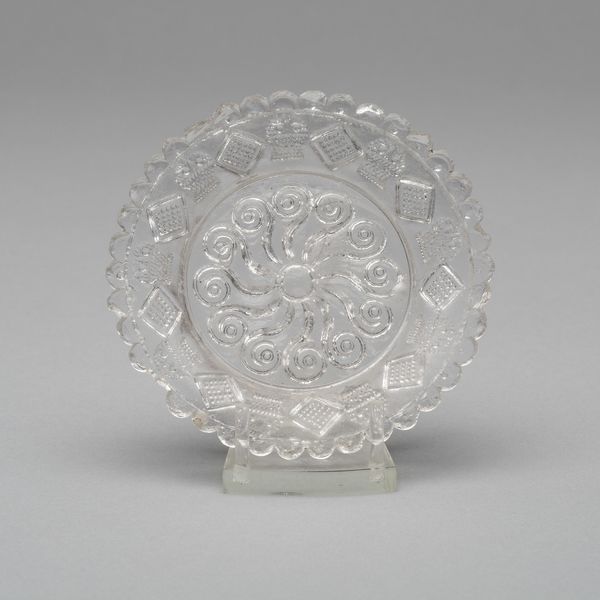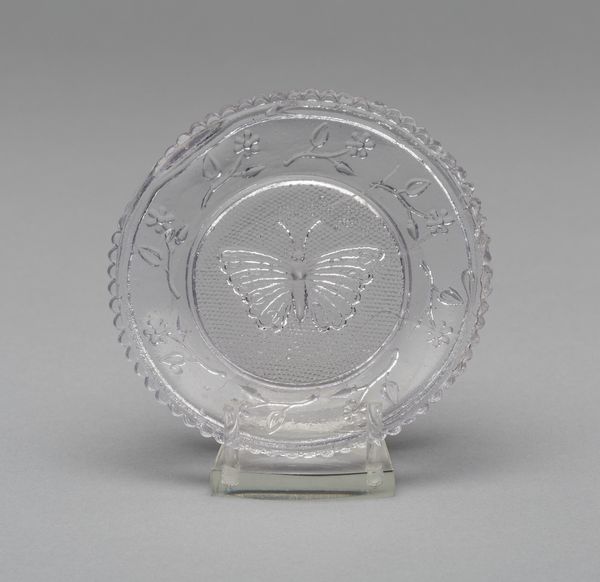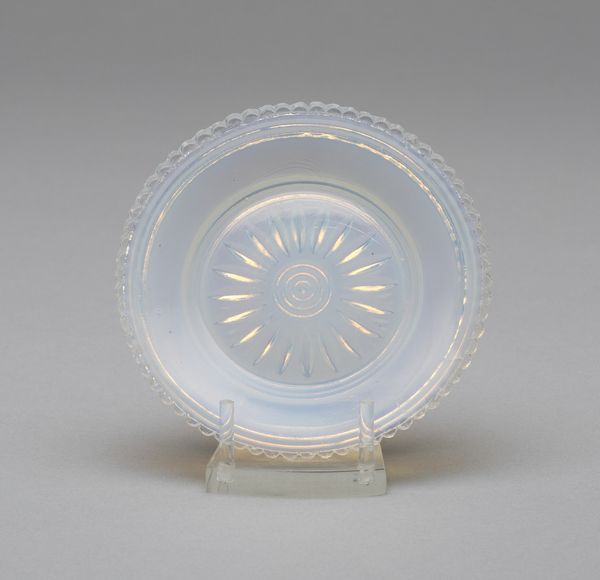
glass
#
glass
#
3d shape
#
decorative-art
Dimensions: diam. 9.8 cm (3 7/8 in.)
Copyright: Public Domain
Curator: Ah, here we have an object that whispers tales of bygone eras. This "Cup plate", crafted sometime between 1830 and 1840, is a gem of pressed glass, currently residing at the Art Institute of Chicago. It's attributed to an anonymous artist. Editor: You know, when I first saw it, I immediately thought of those old-timey photos where everything's slightly out of focus, a bit hazy around the edges. This plate, with all those concentric circles and little beaded details, feels like looking into a blurred memory. Curator: Precisely. These cup plates emerged in response to the popular practice of pouring hot tea or coffee from one's cup into a saucer to cool. They're meant to provide a resting place for the cup between sips, protecting tables from stains and heat. The repeating geometric patterns are quite typical of the era. It’s an unpretentious kind of symbolism: order, efficiency, perhaps even a hint of social grace, rendered in molded glass. Editor: Orderly is a good word. I’m noticing how the circles are broken up by radiating lines– it's like a web, but one made of crystal and light. The glass isn't perfectly clear; there's a subtle cloudiness, almost like the artist was trying to capture a frozen moment. Curator: Indeed. This "cloudiness," or rather, the subtle imperfections inherent in early pressed glass, serves as a material signature. These were made to be relatively inexpensive items, democratizing decorative arts to some extent. Mass production meeting artistry, a kind of proto-industrial poetry. Editor: Proto-industrial poetry! I like that! I wonder if the people who used this plate back then paused, even for a second, and appreciated the little piece of geometry beneath their teacup? Probably not, right? They were too busy gossiping about bonnets or whatever people gossiped about then. Still, there’s something so charmingly practical about it. Curator: Perhaps. But consider this: even mundane objects, repeated across households, become imbued with social and cultural meaning. Think of all those whispered conversations and quiet moments of reflection over a hot beverage, unknowingly inscribed on these plates through the sheer act of collective usage. It’s cultural memory manifested through a common object. Editor: A little stage for societal dramas! Okay, you’ve convinced me. Now, I can't look at it without imagining some tense Regency-era tea party unfolding on its surface. Curator: The plate, in turn, offers us a small window into their world. Editor: Well said. This little thing might seem unassuming, but it turns out to be quite reflective. Thanks for unlocking the secrets in its crystal architecture!
Comments
No comments
Be the first to comment and join the conversation on the ultimate creative platform.
